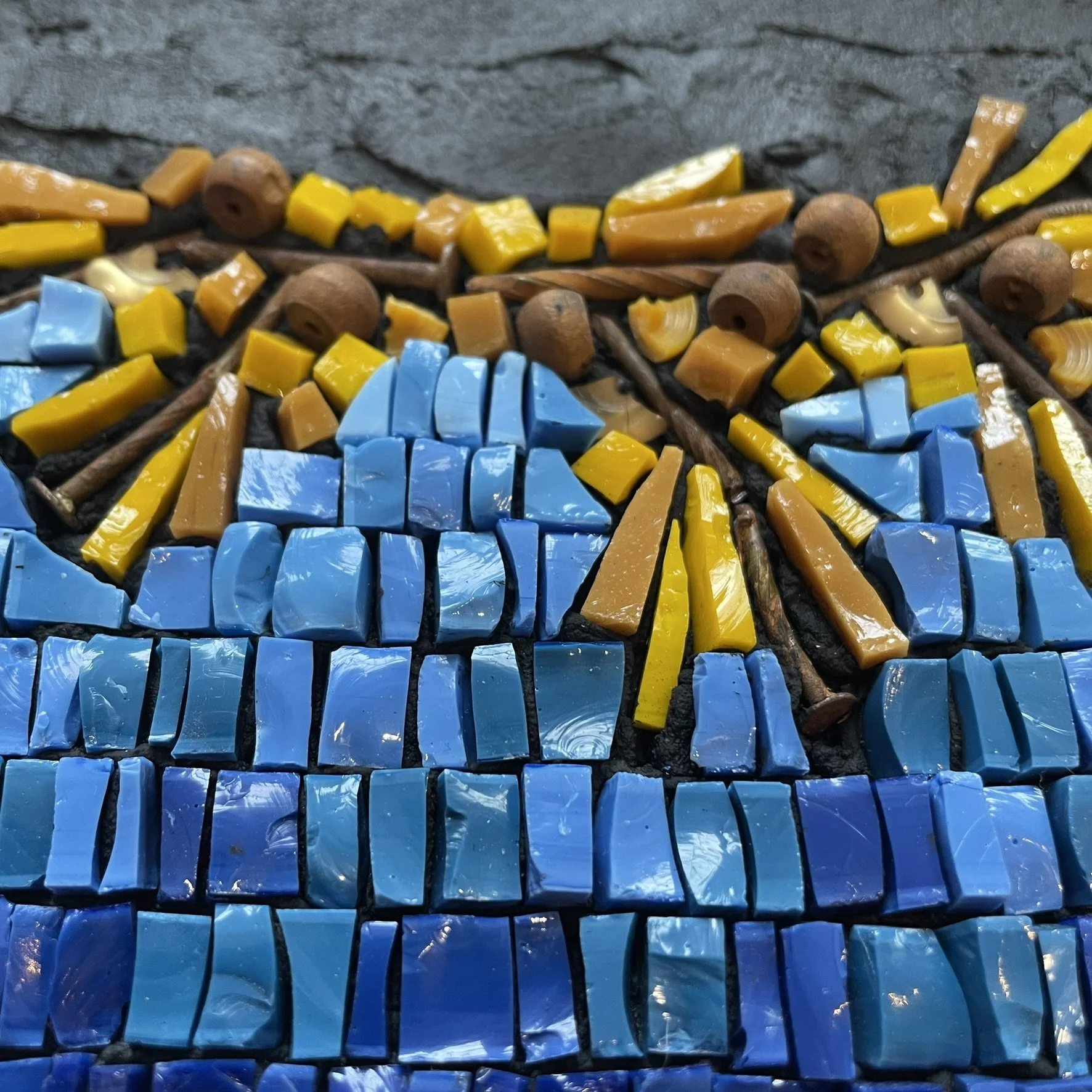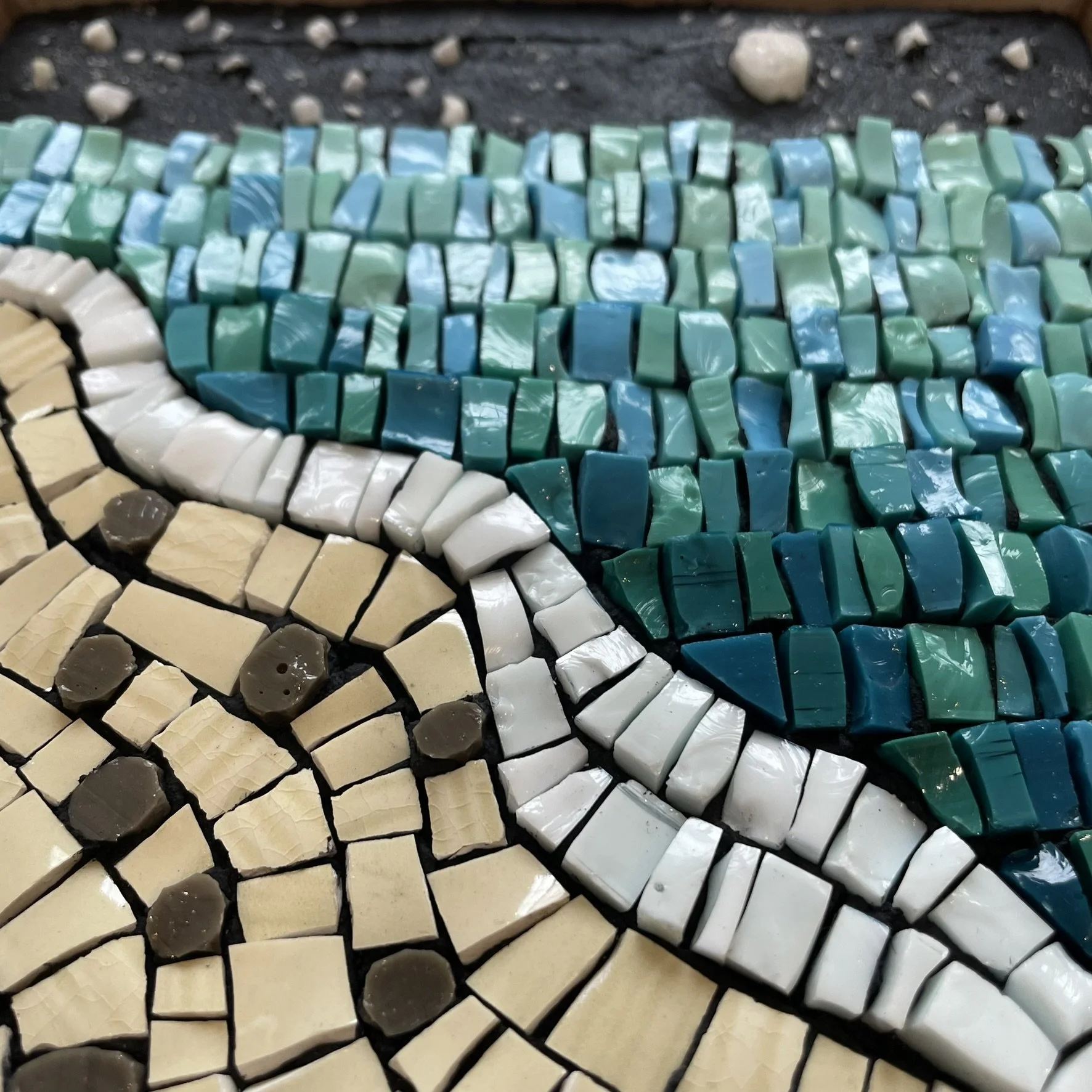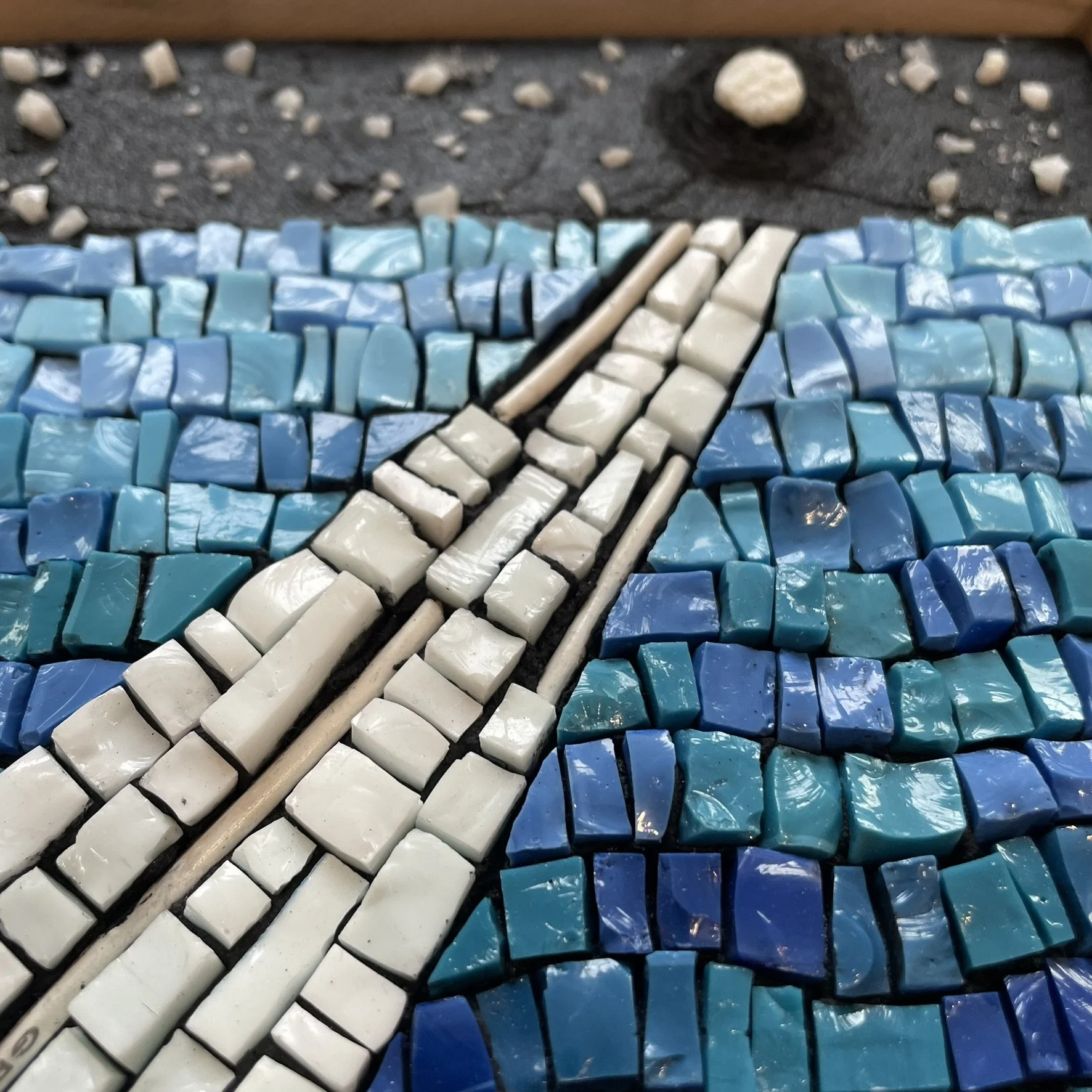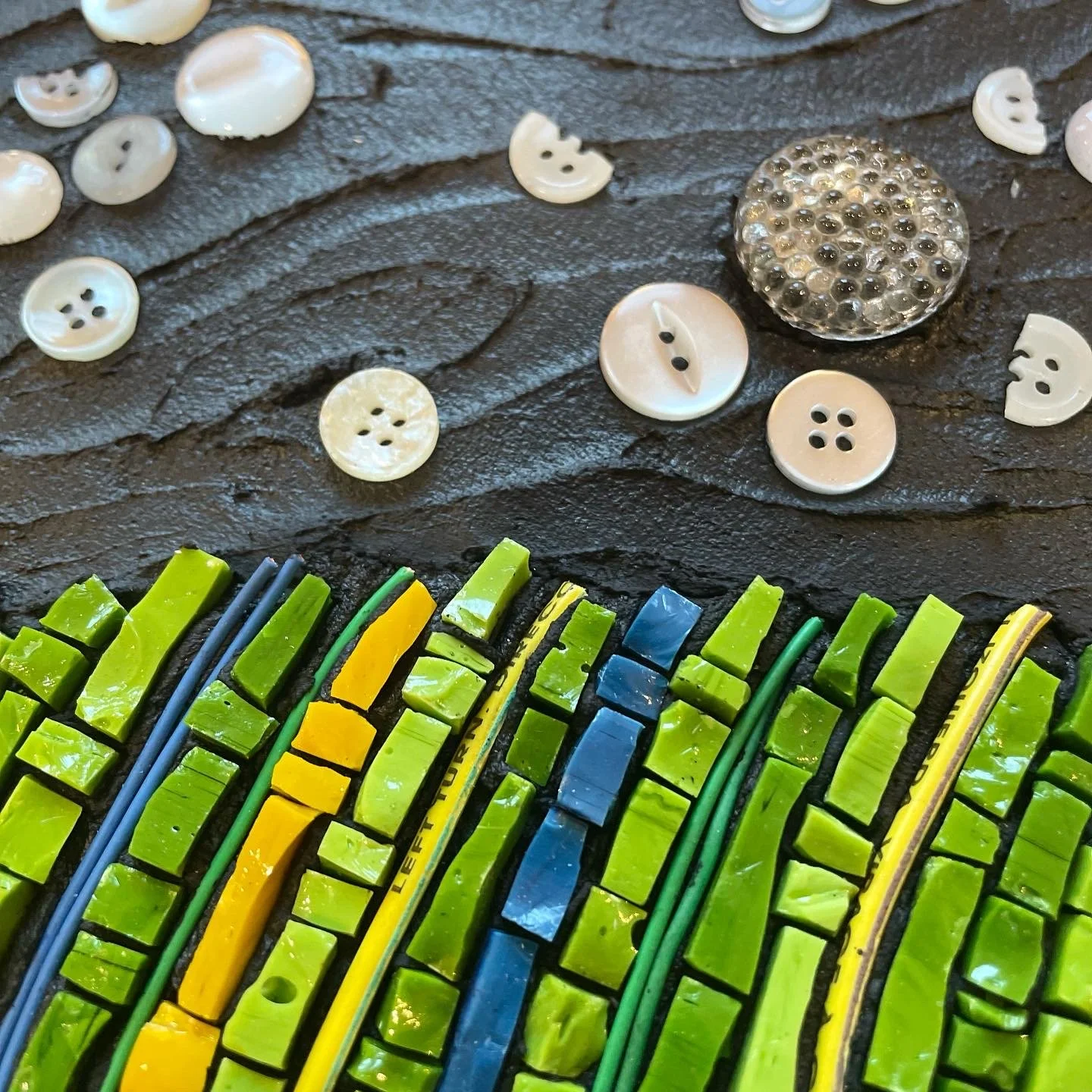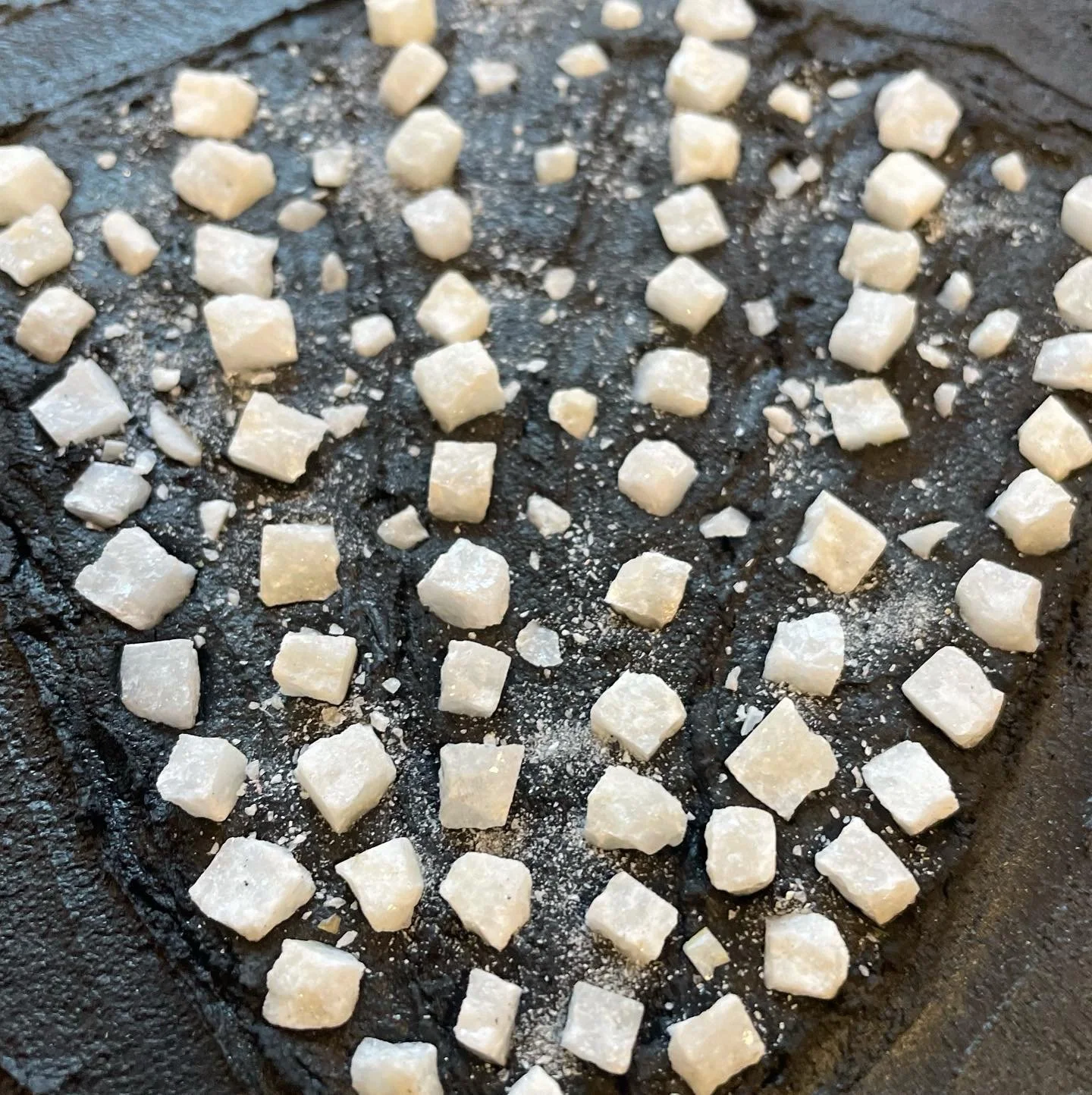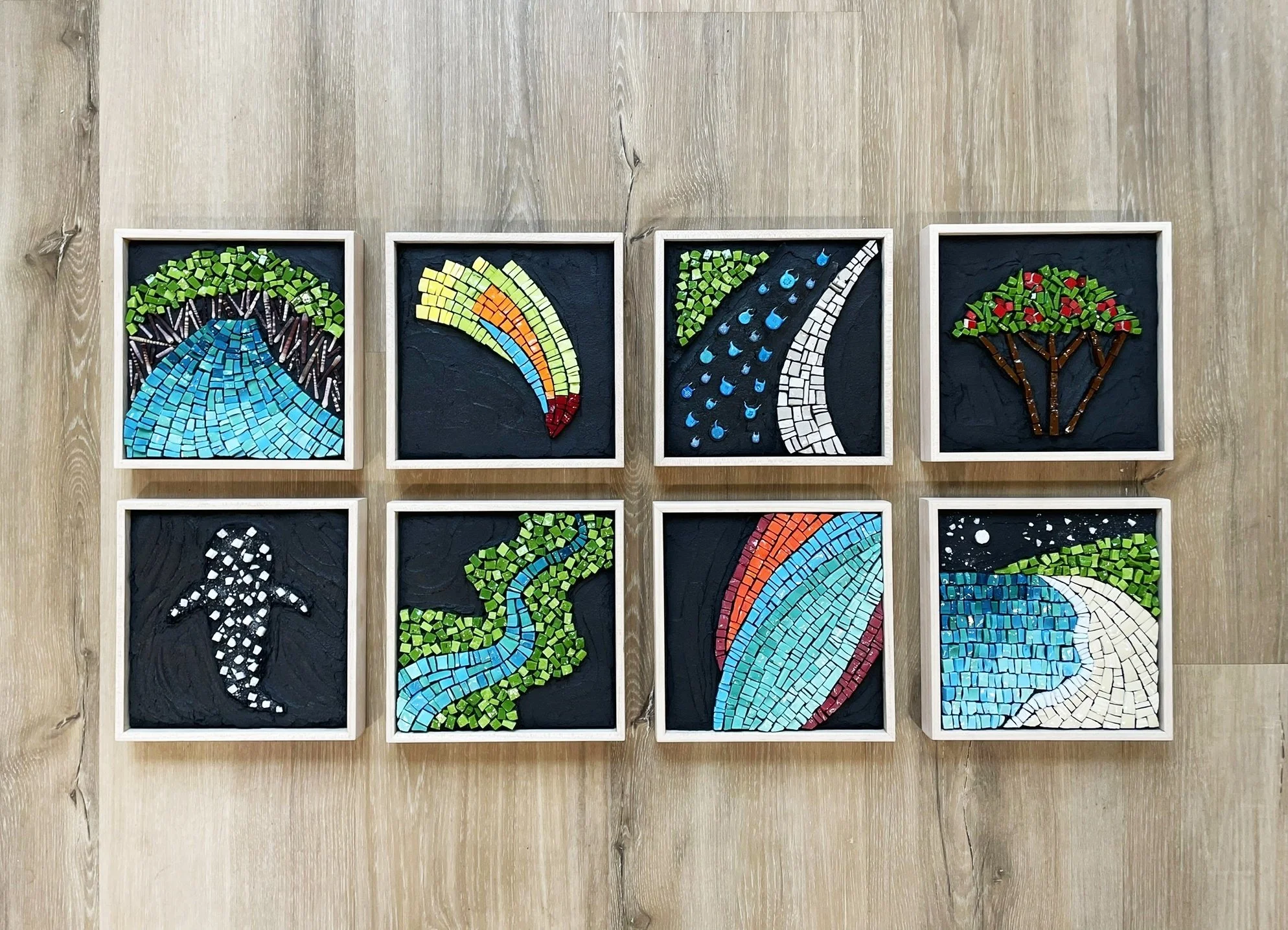Cancún Ecosystem Mosaic Series
Johannah almost missed the short email that started this whole project off. As a small business, we get a fair amount of spam email from “international suppliers.” So on first glance an email requesting our work in Cancún sounded like yet another in this vein.
Good thing we took a closer look! We soon learned that yes indeed, a designer in the hospitality industry was reaching out on behalf of a Marriott hotel in Cancún. The hotel was looking to create an exhibition of work to hang in their lobby that celebrated the local native tropical environment.
The hotel requested two groupings of eight pieces each, centered on two topics: one group exploring the native environment of the region, and the other focused on the life cycle of sea turtles. They wanted the work to emphasize the connection to earth through the use of natural and reclaimed materials.
The first set of images show preparatory sketches, a sampling of the materials, and work-in-progress shots of the two mosaic series and handmade frames we created for this installation.

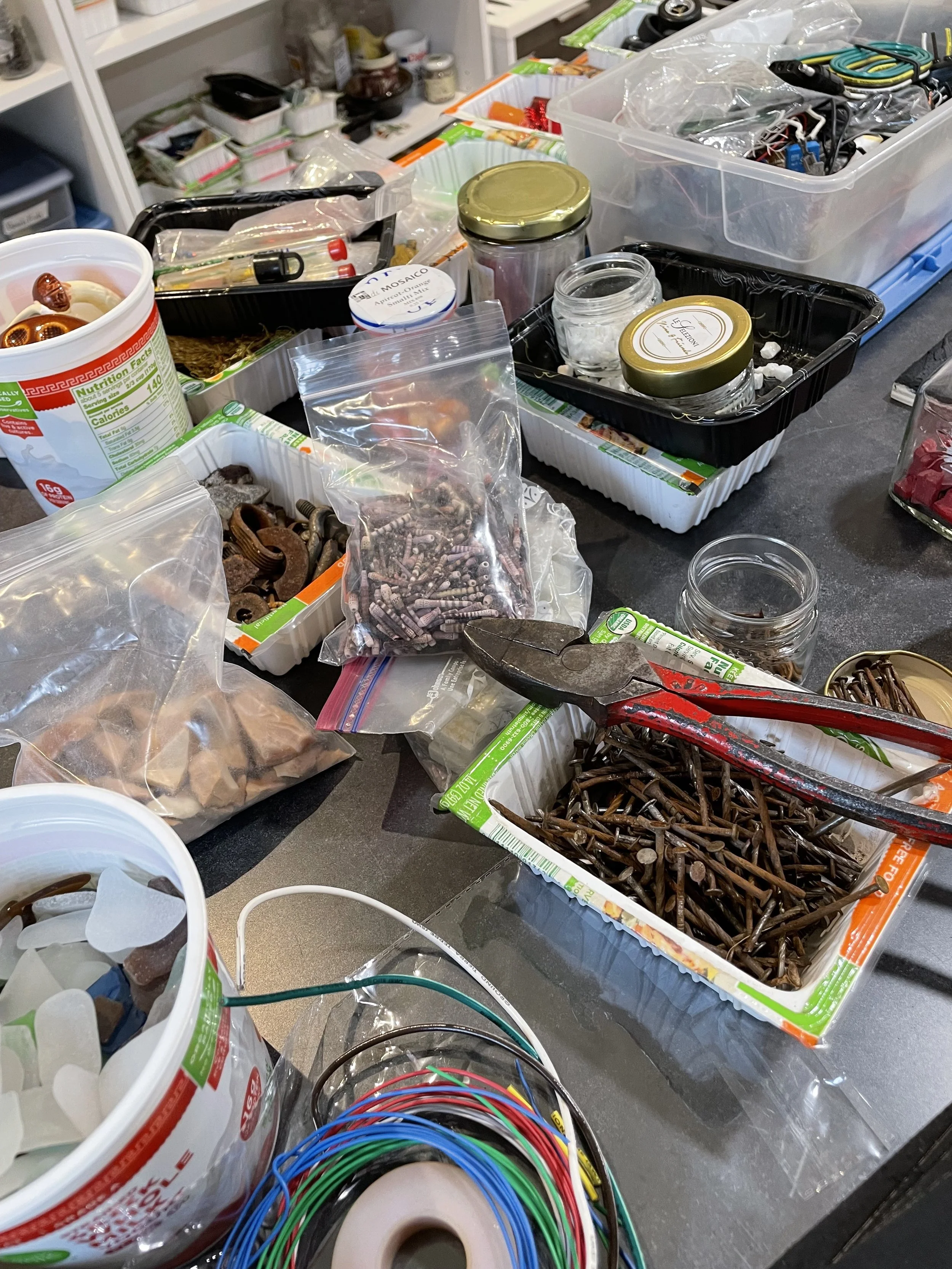

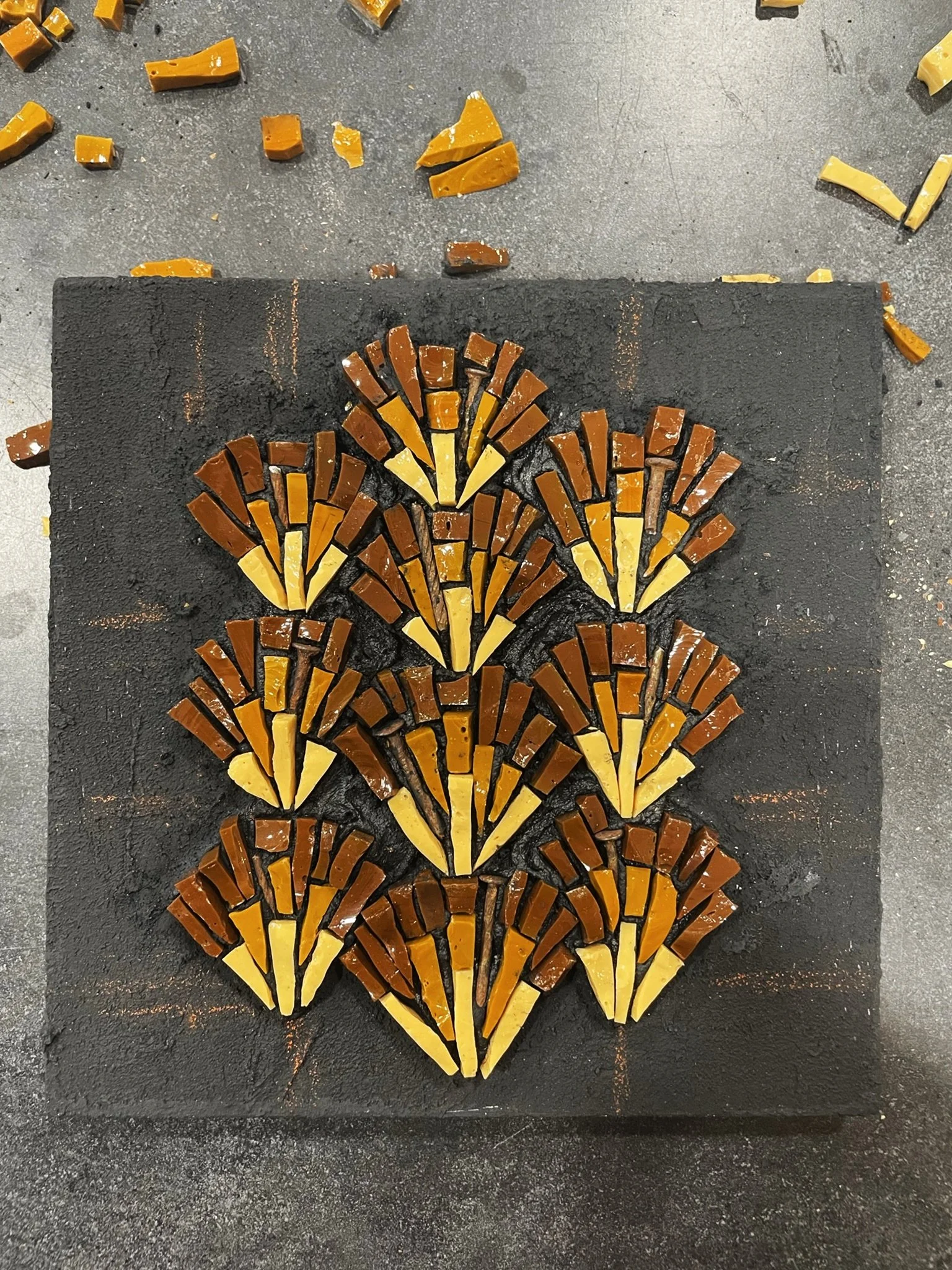


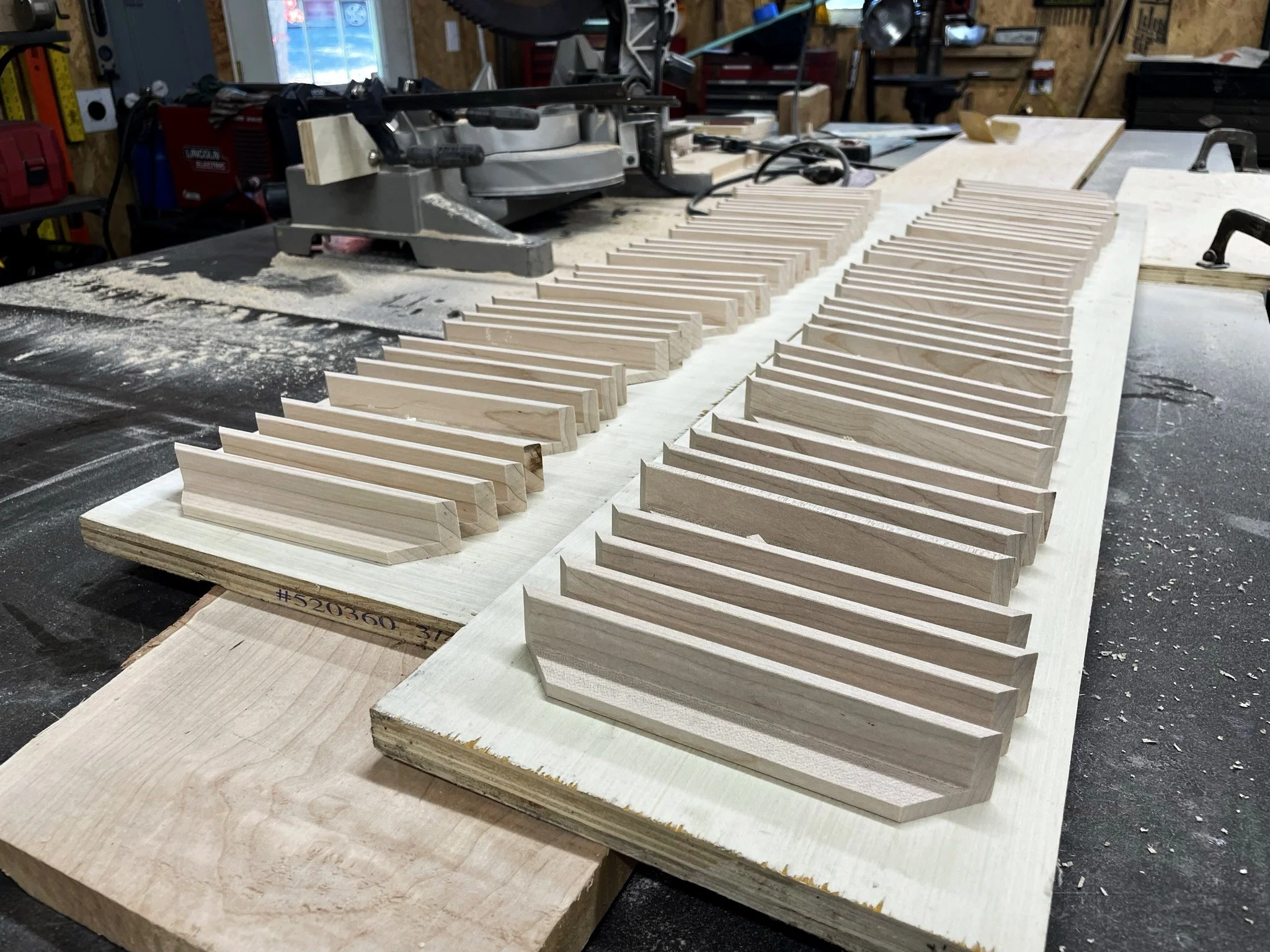
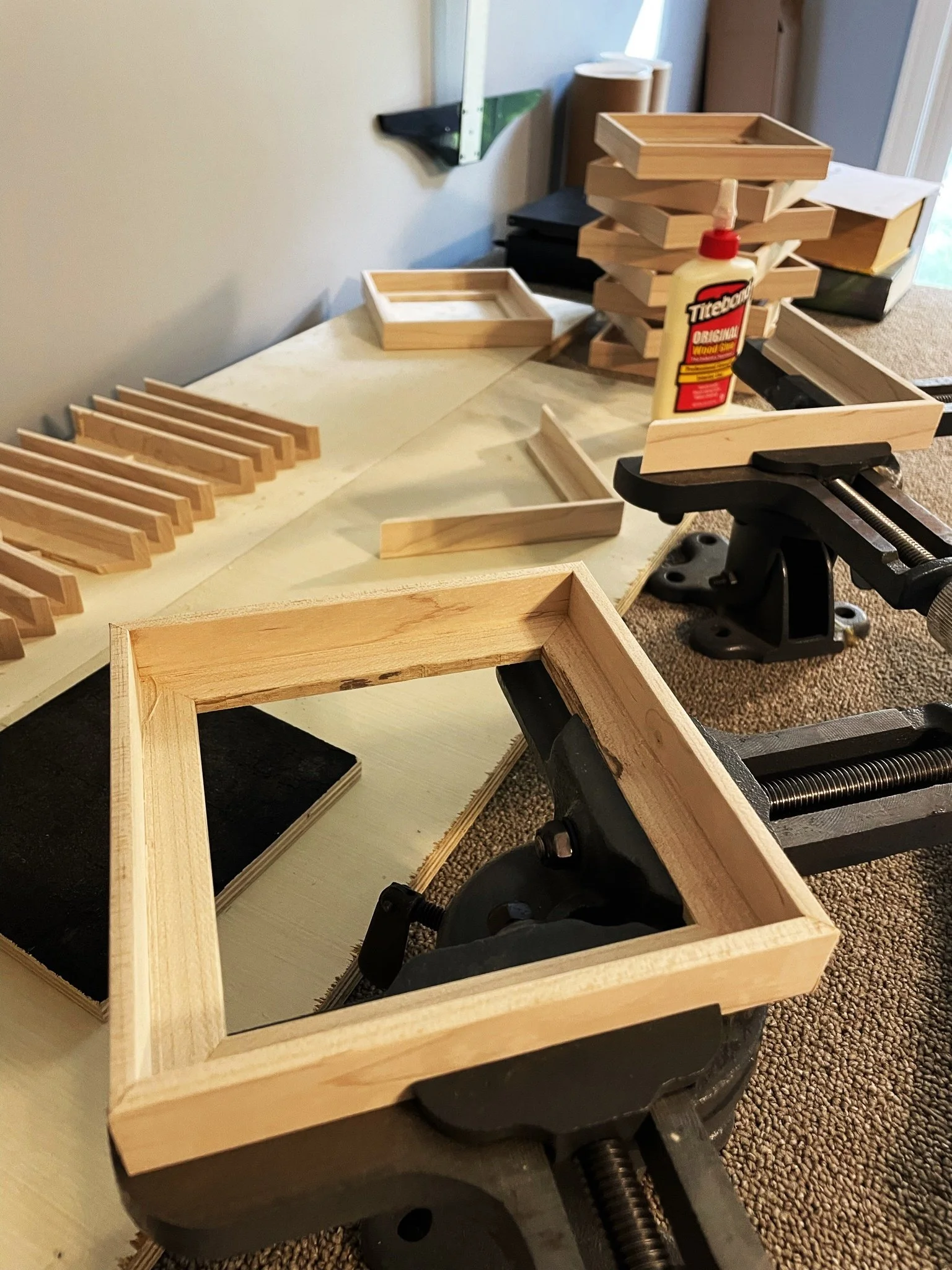
Cancún, Mexico native ecosystem mosaic series
Top row (L to R) Mangroves, Keel-billed Toucan, Blue Crab Migration, Frangipani Tree
Bottom row (L to R): Whaleshark, Lagoon, Rainbow Parrotfish, Island Beach Cove
The native ecosystem series depicts native plants, animals, and landscapes important to the tropical region of the Yucatan peninsula and the Caribbean Sea surrounding Cancún. Johannah focused on species and locations that would be familiar to many visiting tourists and represent a cross-section of the biodiversity of the region.
Nichupté Lagoon is the body of water that lies between the tourist area, a barrier island outside the city, and mainland downtown Cancun. Imagery of this lush landscape inspired the Mangroves and Lagoon pieces. The vibrant Keel-billed Toucan and Rainbow Parrotfish represent the brilliantly colors of so many tropical animals. Well-known the world over as tropical ornamentals, Frangipani Trees, also known as plumeria, are native to the Caribbean. And of course the region is known for its white sand beaches and crystal clear water.
Migratory animals are among the many important tourist draws to the area. They represent the intersection of nature’s rhythms and the encroachment of humans on native habitats. During full moons in the early fall, blue crabs migrate from the mangroves and lagoon in the west, across the busy streets and neighborhoods of the tourist area, to lay their eggs in the Caribbean Sea to the east. Just to the north, the majestic whale shark, the largest living fish species, migrates into the area in the late spring, inspiring boating and swimming tours to view them more closely.



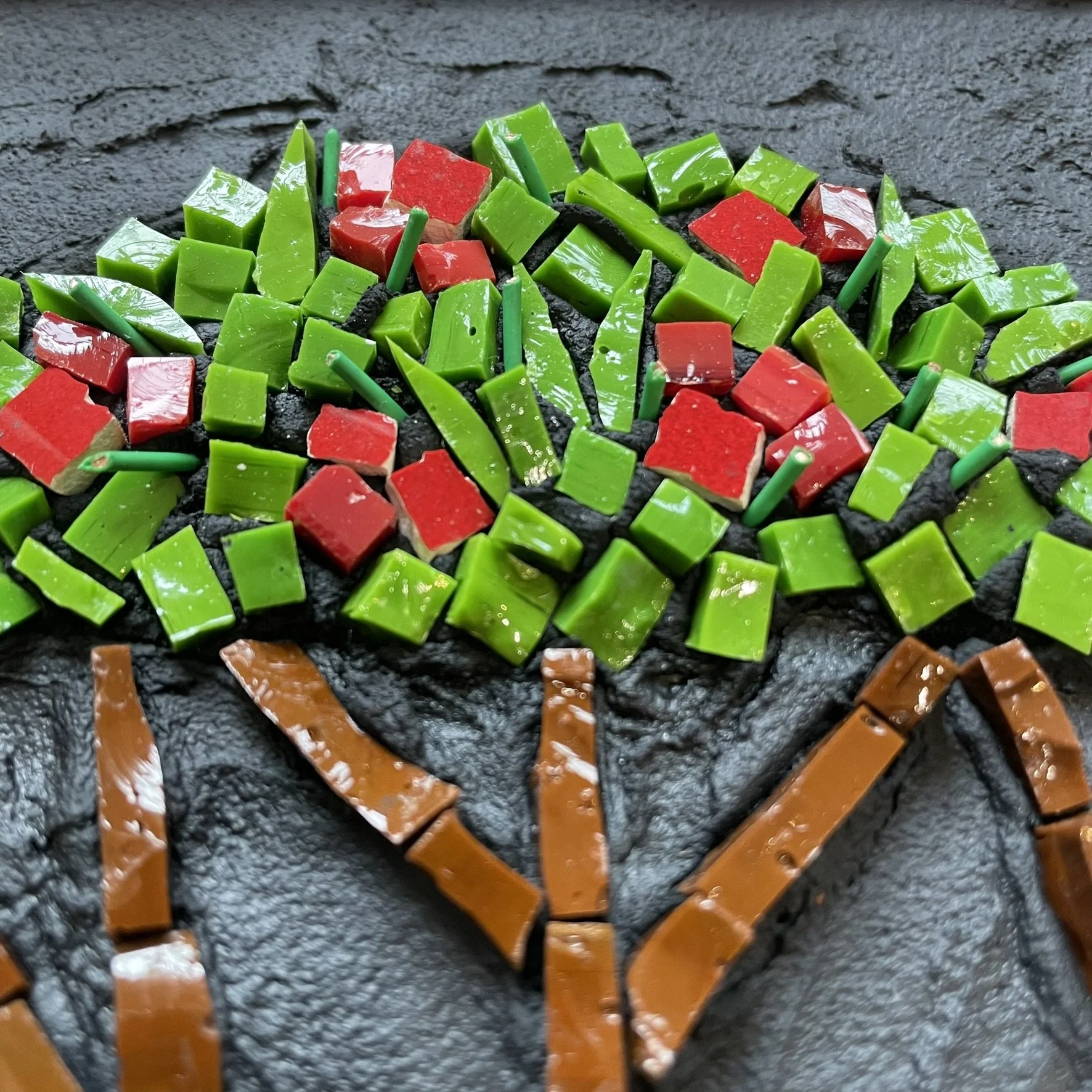


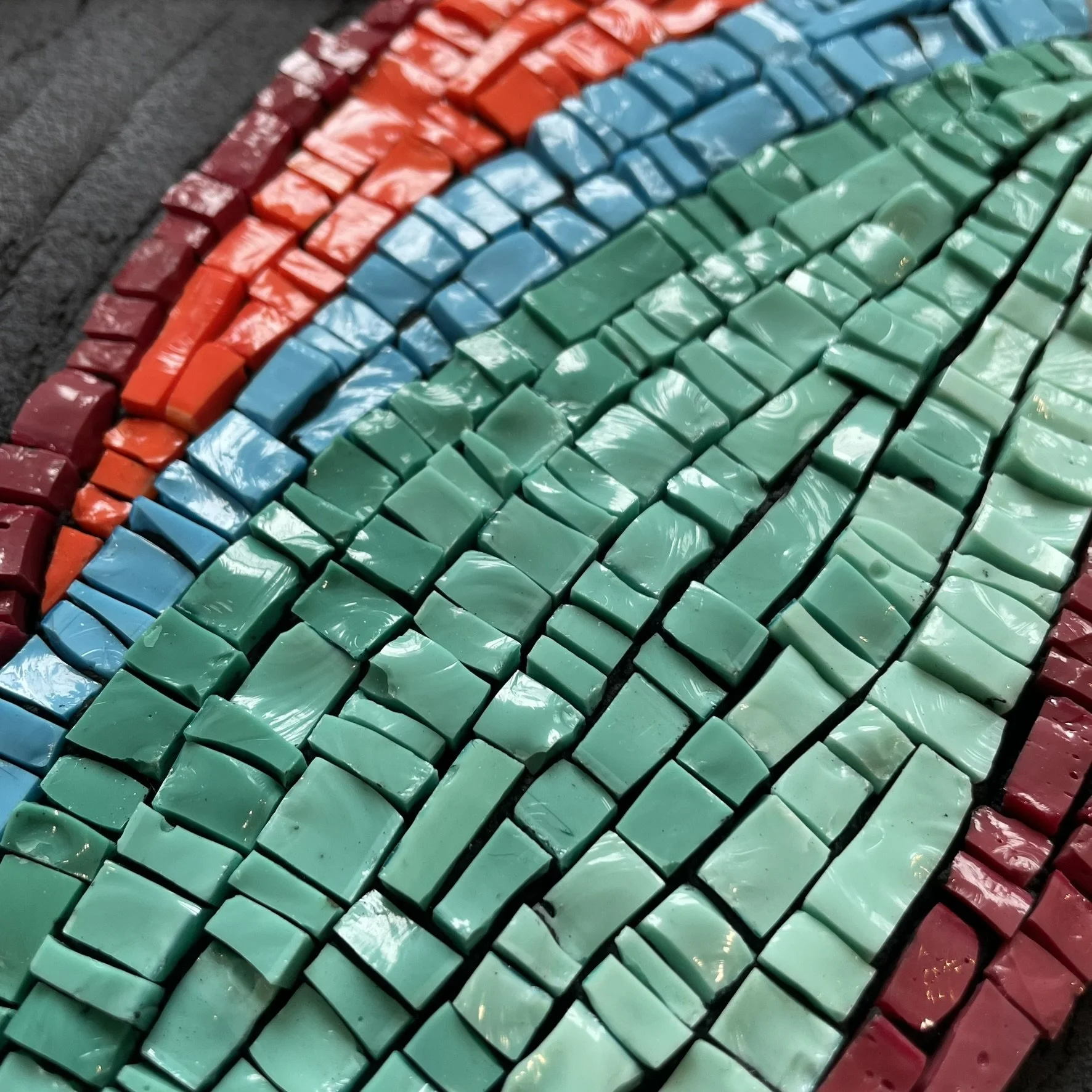

Caribbean sea turtle mosaic series
Top row (L to R): Nesting Dunes, Sargassum Mat, Stove-pipe Sponge, Hawksbill Turtle
Bottom row (L to R): Hatchlings Headed to Sea, Open Sea Under Full Moon, Moon Jellyfish & Seagrass Meadow, Leatherback Turtle
The sea turtle series depicts images representing the life cycle of sea turtles in the Caribbean region. Johannah chose images representing their changing habitat over their life span, their diet, and of course the beautiful patterns of their shells.
All species of adult female sea turtles return to land to dig nests into sea dunes to lay their eggs. The baby sea turtles most often hatch at night and immediately begin their trek to open sea. They spend the first three to five years of life in seaweed mats, such as the golden sargassum seaweed. These mats provide the young turtles with food, shelter, and fresh water.
Once full-grown, sea turtles spend much of their lives closer to shore. Most adult sea turtles are omnivorous, eating a variety of plants and animals. The diet of hawksbill turtles in the Caribbean Sea consists primarily of sponges, such as the long tubular stove-pipe sponge. Green sea turtles feed on sea grass and algae, while the leatherback turtle eats mainly jellyfish.
The hawksbill sea turtle is critically endangered largely due to the use of its beautifully patterned shell for human decoration. The leatherback sea turtle is vulnerable though not endangered and is the largest and most hydrodynamic body shape of all sea turtles. Other sea turtles of the Caribbean include the green sea turtle, the loggerhead, and Kemp’s or Atlantic ridley, the world’s most critically endangered sea turtle.

